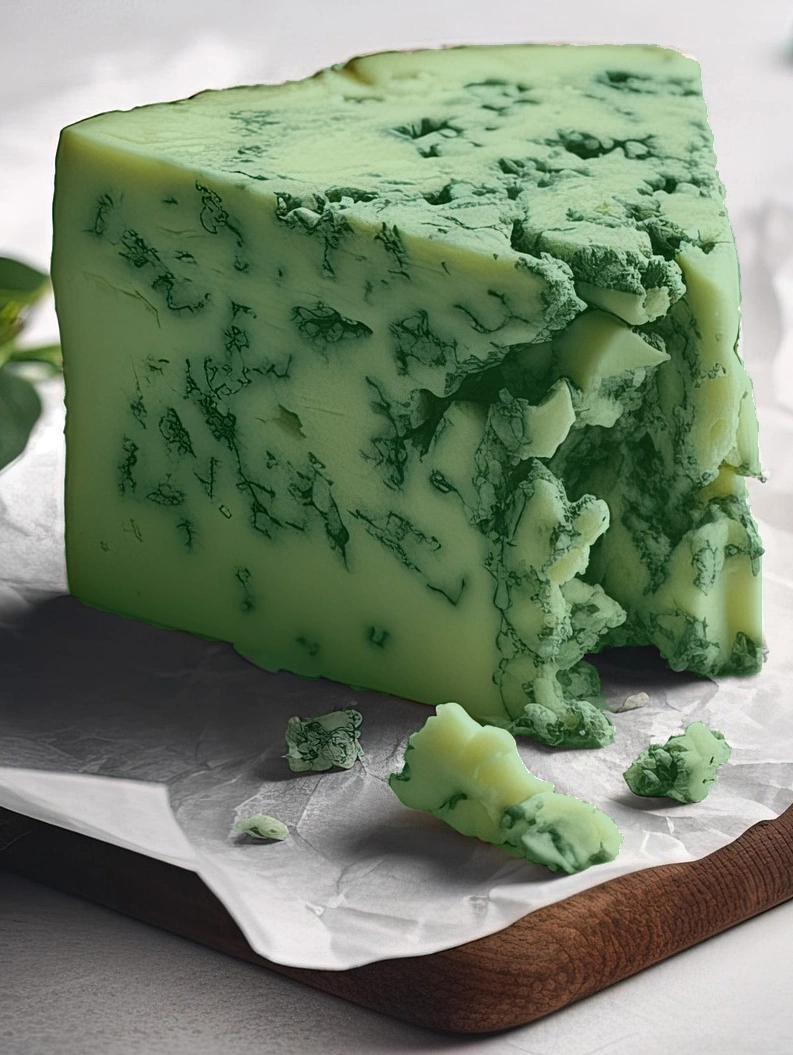Dragon Cheese
The Best Worst Stench Ever
To those who have never encountered this gourmet delight, the aroma of green dragon cheese is said to be a combination of all the worst components of the most repulsive smells imaginable. The aroma is so bad that most peoples' first opportunity to sample the stuff ends before they get near enough to it to pick it up and taste it. Those that do report two things: the first bite tastes as bad as the stuff smells, but they can't seem to resist trying a second and third bite, and by then, the aroma and taste are not only less offensive; but are, in some strange way, attractively compelling.As the platter is brought forth and laid before the cheese neophyte, their nostrils are assailed by an aroma best described as a that of a combination of vomit, excrement, and a bloated, putrefying corpse. But should the neophyte endure and muster the courage to put some in their mouth, they will soon find it to be an aroma that presages the most heavenly tasting and satisfying morsels they have ever consumed.
Producing the Cheese
Terran cheeses have long been made from the milk of various mammals - a raw substance produced by the creatures to feed their newborn young. Green dragon cheese is quite similar in this regard, except that on Lyangcane, biological evolution never developed the mammary gland. Green dragons feed their young by regurgitating partially digested food. This resembles a simple feeding practice used by many species of bird on Terra, but the viricrinids of Lyangcane have evolved a unique way of doing this.Food that is to be given to young is partially digested in a second stomach that appears to only be activated when young are present. This organ does more than begin the protein digestion process of the dragon's prey; it also blends in a concentration of the photosynthetic microbes which give the dragon its unique green color. These eventually take up residence in the young's outer skin and fur to produce the sugars - the metabolic "fuel" - the creature needs to survive. A pheromone is also blended in; this substance strengthens the desire to consume as much of the resultant mix as possible. Researchers have concluded that trace amounts of this pheromone survive the cheese-making process to act on humans consuming the cheese; this is how the initial revulsion over the aroma and taste are overcome.
The cheese itself is made by a process quite familiar to cheese makers and dating back to Terran pre-history. It begins with the collection of green dragon regurgitations - a rather dangerous profession. Care is taken to collect only a portion - leaving enough for the young to thrive. The substance is then pressed through filter cloths to remove as much liquid as possible. The remaining material is cut into blocks, wrapped in porous cloth, and set aside to age and further dehydrate.
A variety of cheese products are made available - dependent on the degree to which the green-tinged cheese is allowed to mature. Most sought after are the hard cheeses resulting from aging times of two years or more. These cheeses, develop a natural "shell" of sorts which is slightly sweeter in taste than the cheese core due to the photosynthetic activity of any surviving microbes during aging process.






This is a great read, and I feel like you took the term "it's so bad it's good" to new levels.
Thanks! And thank you for taking the time to read and comment!
The Perseus Arm - A new, alternative setting for fans of Traveller in any of its variations.
Laurels & Loot is a new, lightweight TTRPG rules system that hearkens back to the early days.